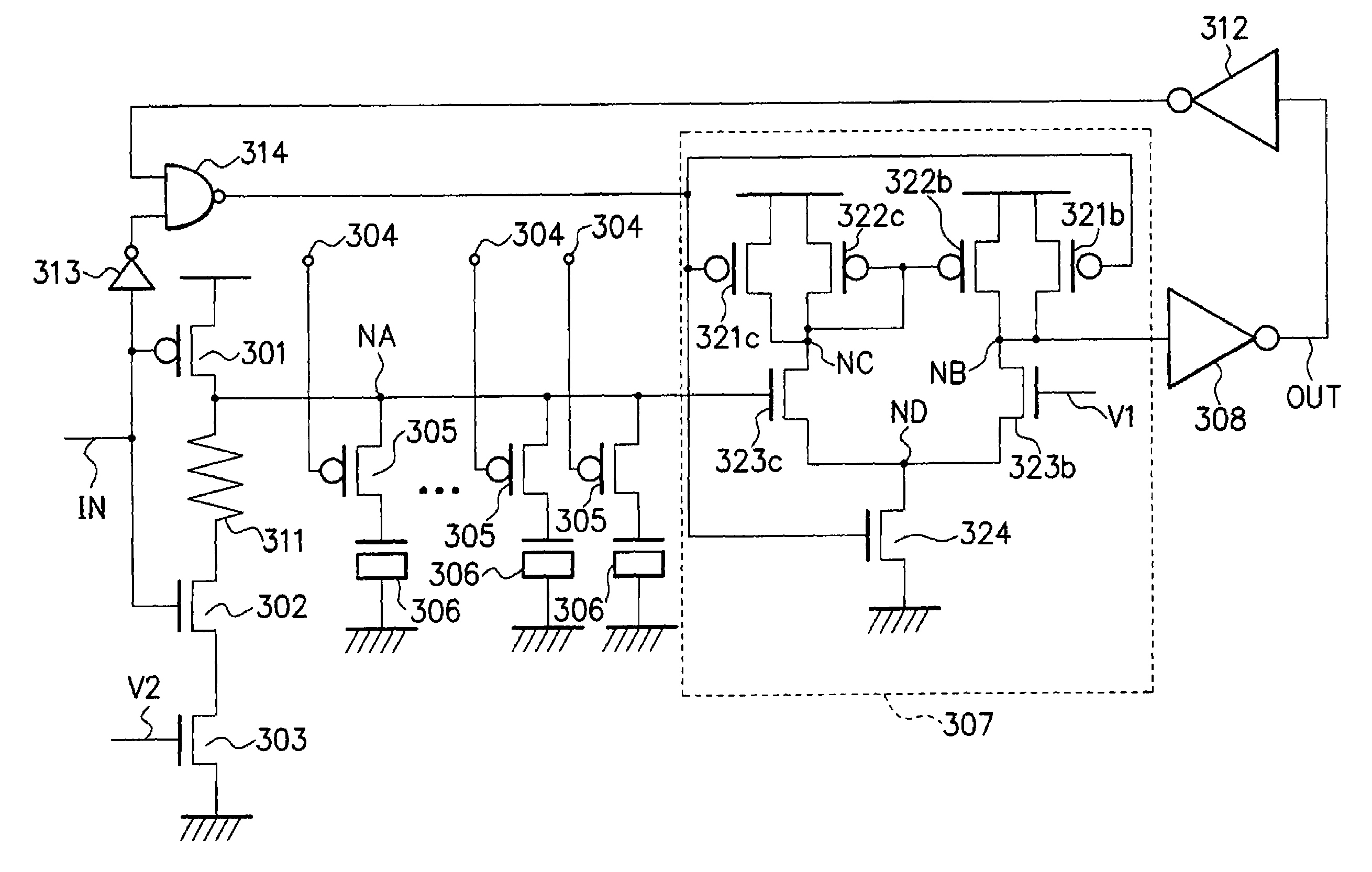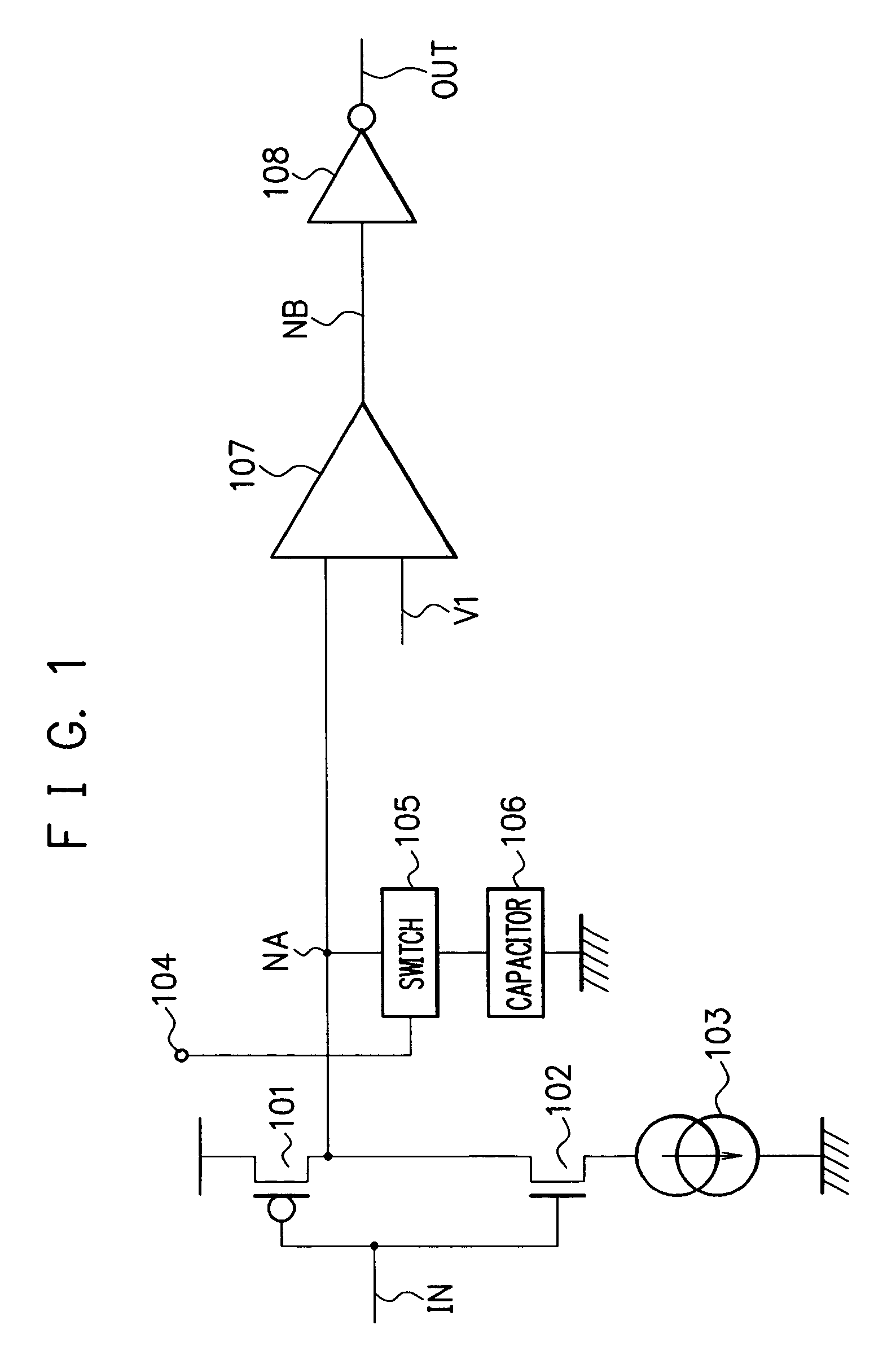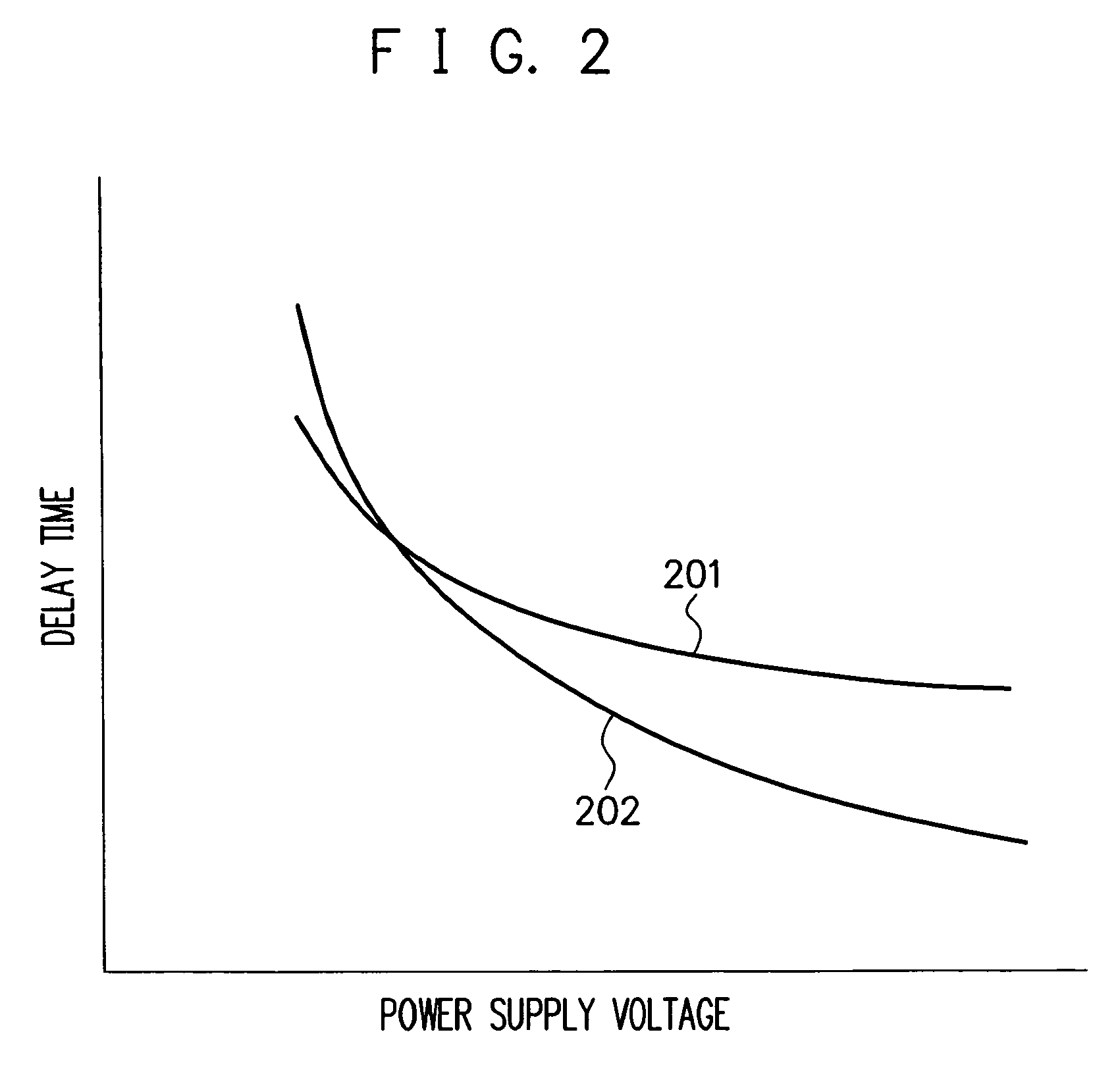Delay circuit having reduced power supply voltage dependency
a delay circuit and power supply voltage technology, applied in the field of delay circuits, can solve the problems of excessive delay time, power supply voltage dependency of delay circuit time, and longer delay time, so as to reduce the power supply voltage dependency of delay time, delay time becomes shorter, and delay time is shorter
- Summary
- Abstract
- Description
- Claims
- Application Information
AI Technical Summary
Benefits of technology
Problems solved by technology
Method used
Image
Examples
Embodiment Construction
[0021]FIG. 1 shows a configuration example of a delay circuit according to an embodiment of the present invention. An input signal line IN is a line through which an input signal is inputted. A p-channel MOS transistor 101 has a gate connected to the input signal line IN, a source connected to a power supply potential, and a drain connected to a node NA. An n-channel MOS transistor 102 has a gate connected to the input signal line IN and a drain connected to the node NA. A constant current source (constant current circuit) 103 is connected between a source of the transistor 102 and a ground potential. Since the transistors 101 and 102 constitute an inverter, a logic inverted signal of the input signal of the input signal line IN appears at the node NA.
[0022]Series connection of a switch 105 and a capacitor 106 is connected between the node NA and the ground potential. When a switch control signal is inputted to a terminal 104, the switch 105 is controlled to turn on or off, so that ...
PUM
 Login to View More
Login to View More Abstract
Description
Claims
Application Information
 Login to View More
Login to View More - R&D
- Intellectual Property
- Life Sciences
- Materials
- Tech Scout
- Unparalleled Data Quality
- Higher Quality Content
- 60% Fewer Hallucinations
Browse by: Latest US Patents, China's latest patents, Technical Efficacy Thesaurus, Application Domain, Technology Topic, Popular Technical Reports.
© 2025 PatSnap. All rights reserved.Legal|Privacy policy|Modern Slavery Act Transparency Statement|Sitemap|About US| Contact US: help@patsnap.com



